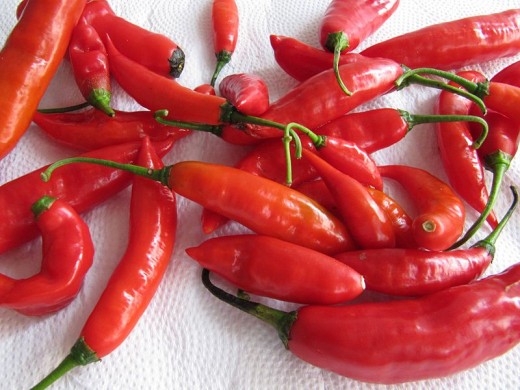Chefs are always looking for ways to make their specialty dishes different from others with unique tastes, textures, and ingredients that will enhance the dining experience and leave a lasting impression for their guests. As chile peppers are in peak season, the traditional staple of red and green chile peppers can provide a unique twist and satisfying flavor to a variety of different meals. Although the chile pepper is very versatile and can be used for several purposes, there are many misconceptions in the culinary industry about how chile should be used.
One of the most common misconceptions about cooking with chile peppers is that they are used specifically to “spice up” or add heat to a dish. On the contrary, a chile pepper should be used to enhance and highlight the individual flavors of each meal. A mild green chile, for instance, can make an impactful addition to most any dish by complementing the ingredients with its mild, yet unique flavor all while not overwhelming the diner with an unpleasant heat intensity. Part of the capsicum vegetable family, chile peppers range from the sweet and mild bell pepper to more spicy red and green chile. When picking out chile, it is important to be aware of their potential heat. The chile peppers commonly found in New Mexico vary on the Scoville Scale with rankings between 500 and 1,000 and can be found in several different heat classifications ranging from very mild to extremely hot.
It is important while cooking with a chile pepper to create a heat intensity that will balance and complement, not mask the flavoring of a dish. Although personally experimenting with each batch of chile is the best way to determine the chile’s heat intensity and how to match that with other ingredients, there are a few tips to consider in order to obtain the ideal balance.
When using a very spicy pepper, pairing the chile with an ingredient that will offset the heat works well to create a balanced flavor. For instance, the Corn Maiden Restaurant at the Hyatt Regency Tamaya Resort & Spa uses a very powerful pepper, the habanero pepper, in its scallop dish while incorporating a fresh peach mixture. Although the thought of using such a powerful pepper can be intimidating at even a professional level, the incorporation of a fresh fruit item helps to counteract extreme heat and works to provide a pleasant and unique mélange of flavors.
Another way to control the heat of a specific chile is the proper cleaning and preparation of the pepper. The heat of a chile is created by the capsaicin which is found in the membrane that surrounds the seeds on the inner part of the chile. By cleaning out the membrane and seeds from the chile’s interior, you can create a less intense heat while preserving the flavor.
From pairing chile with an elegant chocolate dessert, to using it as an accent to a traditional New Mexico-inspired plate, there are many ways to use chile that can satisfy every palate. Always remember that adding spice and heat can be complementary to many dishes, but it is important to not mask the unique flavor of the ingredients and chile itself with an intense spice. Diners are sure to appreciate the achievement of the ideal flavor and heat balance.
.
By Samuel Reed
Samuel Reed is the chef de cuisine at the Corn Maiden restaurant at the Hyatt Regency Tamaya Resort & Spa that is located near Santa Fe, NM.













